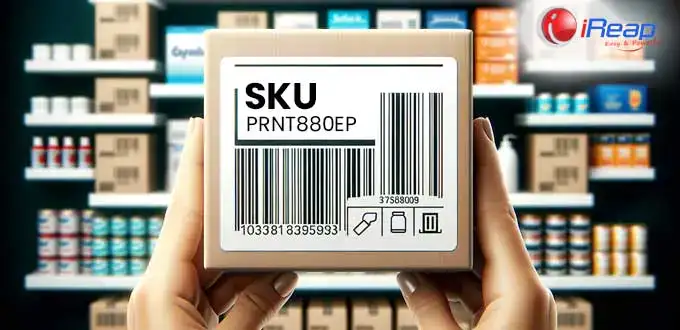
Entering the retail world is a challenge in itself, especially when dealing with inventory that can reach thousands of items. In such situations, the use of SKU (stock keeping unit) becomes a staple for traders to organize and better understand their inventory. For most of us, the term SKU may sound familiar, especially when we see price tags or product details while shopping. However, there is still confusion regarding the difference between SKU and barcode and what exactly the function of the SKU itself is.
To eliminate confusion and provide a clearer understanding, let’s delve deeper into the concept and benefits of SKU in the world of retail and inventory management.
What is SKU?
SKU, or Stock Keeping Unit, is a term used in inventory management and retail to identify and uniquely distinguish products from one another. SKUs are usually a combination of numbers and letters that reflect certain characteristics of a product, such as brand, size, color, or type.
Using SKU allows companies to track inventory more accurately and efficiently, facilitate restocking, analyze sales, and optimize sales strategies. Each SKU is unique to a specific item, allowing companies to monitor product availability, manage orders, and conduct detailed sales analysis.
Difference Between SKU and UPC (Universal Product Codes)
SKU (Stock Keeping Unit) and UPC (Universal Product Code) are two coding systems used to identify products in retail, but they have significant differences in how they are used and their purposes.
SKUs are used for unique codes set by retail companies to manage inventory and facilitate internal operations such as stock tracking, purchase planning, and sales analysis. Meanwhile, UPCs are used as standard barcodes for product identification. Their purpose is to simplify product checking and payment in stores as well as for tracking and logistics management.

The format used for SKUs is usually a combination of numbers and letters created by the retailer and can vary in length. Each retailer has its own SKU system that is not uniform with other retailers. For example:
Let’s say the SKU to be determined is for a Printer model “ColorJet Pro M880” with the brand “Epson”. Its SKU could be something like PRNT-880EP.
Benefits of SKU for Business
The function of using SKU (Stock Keeping Unit) covers several key aspects in retail management and business operations. Here are some examples of SKU functions in a business context:
1. Process Automation
SKU can be integrated into POS (Point of Sale) / Cashier systems and enterprise resource management (ERP) to automate sales, purchasing, and logistics processes.

2. Inventory Tracking
SKU allow businesses to accurately track the available stock quantity of each item in the warehouse or on the sales floor.
3. Sales Analysis
By associating sales data with SKU, businesses can determine which products are the best sellers, seasonal sales trends, and the effectiveness of promotions.
4. Restocking
SKUs help identify when a product’s stock needs to be replenished based on predetermined inventory levels.
5. Avoiding Mistakes
The use of SKUs reduces the risk of human error in handling products because each item has a unique code.
Conclusion
The conclusion from the discussion regarding the use of SKU (Stock Keeping Unit) in business, especially in the retail and distribution sector, is that SKUs are an essential tool. SKUs facilitate accurate inventory tracking, enhance sales analysis, optimize restocking, and automate business processes. Through effective implementation of SKUs, companies can reduce errors, improve returns management, and enhance order management, all of which lead to increased customer satisfaction and operational efficiency.


